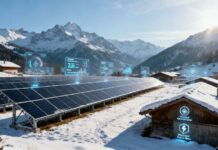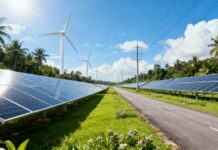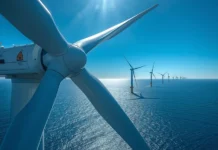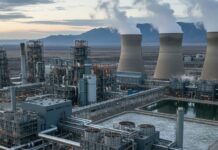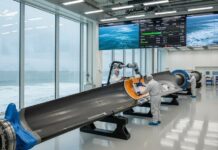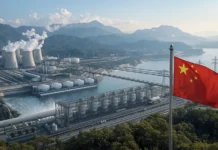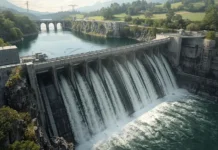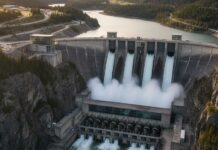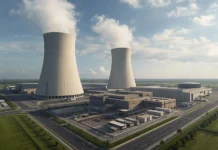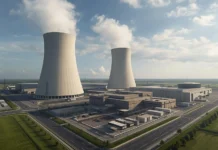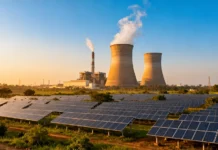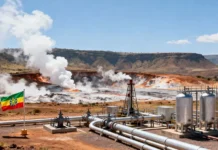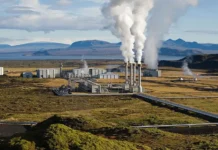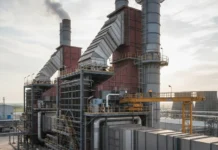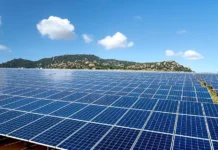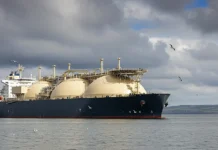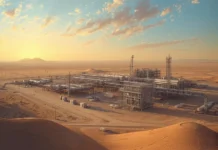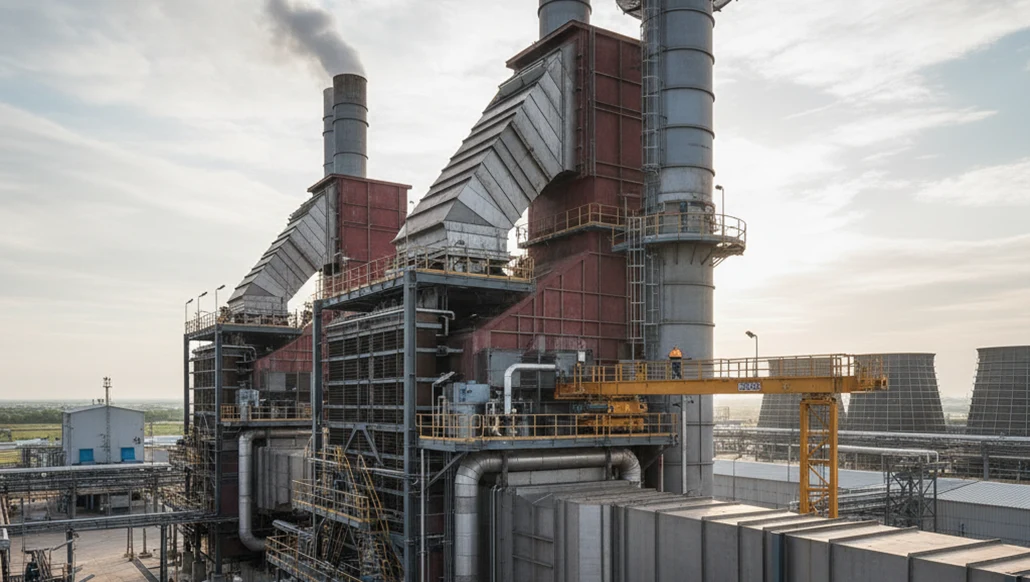Heat Recovery and Thermal Management in Energy-Intensive Plants
The quest for enhanced energy efficiency in industrial operations has never been more critical, as heat recovery and thermal management in power plants represent substantial opportunities for improving overall system performance while reducing operational costs and environmental impact. Energy-intensive facilities across industries typically waste significant amounts of thermal energy through exhaust gases, cooling systems, and various industrial processes, creating opportunities for waste heat recovery systems that can transform this otherwise lost energy into valuable resources for power generation, process heating, or other beneficial applications.
Industrial facilities worldwide lose enormous quantities of energy through waste heat that exits through exhaust stacks, cooling towers, and other thermal discharge systems. Thermal efficiency improvements through comprehensive heat recovery can capture these energy flows and redirect them to productive uses, potentially reducing total energy consumption by 10-50% depending on the facility type and heat recovery system design.
Energy-intensive industries including steel production, cement manufacturing, chemical processing, and power generation offer the greatest opportunities for waste heat recovery implementation due to their high-temperature processes and substantial thermal energy flows. These facilities often operate processes at temperatures ranging from 200°C to over 1500°C, creating multiple opportunities for heat recovery at different temperature levels and applications.
The growing focus on industrial heat management reflects both economic drivers related to energy cost reduction and environmental pressures to minimize carbon emissions and improve overall energy utilization efficiency. Comprehensive thermal management strategies can significantly improve plant economics while supporting corporate sustainability objectives and regulatory compliance requirements.
Understanding Waste Heat Sources and Characteristics
Waste heat in energy-intensive facilities originates from numerous sources including combustion processes, cooling systems, compressed air operations, and various manufacturing processes that generate thermal energy as a byproduct. High-temperature waste heat sources typically include furnace exhaust gases, kiln discharge, and other combustion-related systems that operate above 500°C.
Medium-temperature waste heat sources operate in the 200-500°C range and include process equipment exhaust, steam system condensate, and various manufacturing processes. These sources often provide excellent opportunities for steam generation, process preheating, and organic Rankine cycle power generation applications.
Low-temperature waste heat sources below 200°C include cooling water systems, compressor discharge, and various process streams. While these sources may seem less valuable, they can still provide significant energy recovery opportunities through heat pump systems, preheating applications, and thermal storage systems.
The quality and quantity of waste heat determine optimal recovery strategies and technologies. Higher temperature sources generally provide more valuable energy recovery opportunities, but the total quantity of available heat also significantly influences project economics and system design considerations.
Heat Recovery System Technologies and Applications
Waste heat recovery systems utilize various technologies designed to capture thermal energy from waste streams and transfer it to beneficial applications. Heat exchangers represent the most common heat recovery technology, utilizing conduction and convection heat transfer to move thermal energy from waste streams to useful applications without direct mixing of fluids.
Recuperators use metallic or ceramic heat exchangers to transfer heat from exhaust gases to incoming combustion air or process streams. These systems can achieve heat recovery efficiencies of 60-80% while improving overall system efficiency and reducing fuel consumption in combustion processes.
Regenerative systems utilize thermal storage materials to alternately absorb heat from waste streams and release it to beneficial applications. These systems can achieve higher heat recovery rates than continuous heat exchangers but require more complex control systems and operational procedures.
Heat recovery steam generators utilize waste heat to produce steam for power generation, process heating, or other applications. These systems can generate substantial amounts of steam from high-temperature waste heat sources while providing flexible options for steam utilization across facility operations.
Organic Rankine cycle systems convert waste heat directly to electrical power using organic working fluids that vaporize at lower temperatures than water. These systems can generate electricity from medium and low-temperature waste heat sources that cannot support conventional steam power generation.
Thermal Management Strategies for Power Plants
Power plant optimisation through comprehensive thermal management addresses multiple heat flows throughout power generation facilities to maximize overall efficiency and minimize environmental impact. Modern power plants incorporate sophisticated heat recovery systems that capture waste heat from turbine exhaust, cooling systems, and various auxiliary processes.
Combined heat and power systems maximize thermal efficiency by utilizing waste heat from power generation for industrial processes, district heating, or other beneficial applications. These systems can achieve overall energy utilization rates of 80-90% compared to 35-40% for conventional power generation alone.
Steam cycle optimization utilizes waste heat recovery to improve feedwater heating, reduce turbine exhaust losses, and enhance overall cycle efficiency. Regenerative feedwater heating using turbine extraction steam can improve power plant efficiency by 5-10% while reducing fuel consumption and emissions.
Cooling system optimization captures waste heat from cooling water circuits and redirects it to beneficial applications including space heating, process preheating, or thermal storage systems. These applications can provide substantial energy savings while reducing cooling water requirements and environmental impact.
Flue gas heat recovery systems capture thermal energy from power plant exhaust gases for steam generation, air preheating, or other applications. These systems can recover 10-20% of the fuel energy that would otherwise be lost through the stack while reducing emissions and improving overall plant efficiency.
Industrial Process Heat Integration
Industrial heat management strategies focus on systematic analysis of thermal energy flows throughout manufacturing facilities to identify optimization opportunities and heat recovery potential. Process integration studies analyze temperature levels, energy quantities, and timing requirements to design comprehensive heat recovery networks.
Pinch analysis techniques identify optimal heat exchanger networks that maximize heat recovery while minimizing capital costs and operational complexity. These analytical methods can identify heat recovery opportunities that might not be obvious through conventional analysis approaches.
Heat cascade systems utilize multiple temperature levels to extract maximum energy recovery from waste heat sources. These systems can achieve higher overall heat recovery rates by matching waste heat temperatures with appropriate applications throughout the facility.
Thermal storage systems enable temporal decoupling of waste heat availability and beneficial utilization requirements. These systems can store excess waste heat during peak production periods and release it when needed for other applications, improving overall heat recovery effectiveness.
Advanced Heat Recovery Technologies
Thermal efficiency improvements continue advancing through development of enhanced heat recovery technologies that can operate effectively under challenging industrial conditions. Advanced materials including high-temperature alloys, ceramic materials, and specialized coatings enable heat recovery systems to operate reliably in corrosive and high-temperature environments.
Heat pump systems can upgrade low-temperature waste heat to higher temperature levels suitable for process heating or other applications. These systems can achieve heat recovery ratios of 3:1 or higher, making low-temperature waste heat sources economically attractive for recovery.
Thermoelectric systems convert waste heat directly to electricity using solid-state devices with no moving parts. While current efficiency levels are relatively low, these systems can provide electricity generation from waste heat sources that cannot support other power generation technologies.
Absorption refrigeration systems utilize waste heat to provide cooling for industrial processes or comfort cooling applications. These systems can provide valuable cooling services while utilizing waste heat that might otherwise be rejected to the environment.
Economic Analysis and Project Development
The economics of waste heat recovery projects depend on factors including waste heat availability, recovery system costs, energy prices, and available incentives or carbon pricing mechanisms. Comprehensive economic analysis must consider both capital costs and ongoing operational benefits over the system lifecycle.
Energy cost savings represent the primary economic driver for most heat recovery projects. Current energy prices, projected price trends, and local utility rate structures significantly influence project economics and optimal system sizing decisions.
Capital cost considerations include heat recovery equipment, installation costs, and any required modifications to existing systems. Heat recovery projects often benefit from economies of scale, making larger systems more economically attractive per unit of energy recovered.
Payback period analysis typically shows attractive returns for well-designed heat recovery systems, with payback periods of 2-7 years common for industrial applications depending on energy costs and system complexity.
Environmental benefits including carbon emission reductions may provide additional economic value through carbon markets, regulatory compliance, or corporate sustainability programs. These benefits can significantly improve project economics in regions with carbon pricing or emission reduction requirements.
Implementation Challenges and Solutions
Technical challenges in heat recovery implementation include materials compatibility, system integration complexity, and operational reliability requirements. High-temperature and corrosive environments require specialized materials and design approaches that can increase system costs and complexity.
Space constraints in existing facilities can limit heat recovery system installation options and require innovative design solutions. Retrofitting heat recovery systems into operating facilities often requires careful planning to minimize operational disruptions during installation.
Maintenance requirements for heat recovery systems must be considered during design to ensure long-term reliability and performance. Systems should be designed for easy access and maintenance while minimizing ongoing operational costs.
System integration challenges require coordination between heat recovery systems and existing facility operations. Control system integration ensures that heat recovery systems operate effectively while maintaining overall facility performance and safety requirements.
Environmental Benefits and Emission Reduction
Emission reduction through comprehensive heat recovery can significantly decrease facility carbon footprints and environmental impact. Reduced fuel consumption directly translates to lower carbon dioxide emissions while improving air quality through reduced combustion requirements.
Energy efficiency improvements through heat recovery support corporate sustainability objectives and environmental stewardship goals. These improvements can contribute to emission reduction targets while providing economic benefits through reduced energy costs.
Resource conservation benefits include reduced fuel consumption, lower water usage for cooling applications, and decreased overall environmental impact from industrial operations. Heat recovery systems help facilities operate more sustainably while maintaining production requirements.
Regulatory compliance benefits may include meeting emission standards, energy efficiency requirements, or other environmental regulations that increasingly focus on industrial energy utilization and waste heat recovery.
Future Technology Developments
Advanced materials research continues developing heat exchanger materials and coatings that can operate effectively under extreme temperature and corrosive conditions while providing enhanced heat transfer performance. These materials will enable heat recovery from previously inaccessible waste heat sources.
Digitalization and sensor technologies enable more sophisticated monitoring and control of heat recovery systems to optimize performance and identify maintenance requirements. Advanced analytics can maximize heat recovery effectiveness while minimizing operational costs.
Integration with renewable energy systems creates opportunities for thermal storage and hybrid renewable-waste heat systems that provide enhanced flexibility and energy security. These integrated approaches can maximize overall system efficiency while supporting renewable energy utilization.
Modular system designs enable easier retrofit installation and scalable heat recovery solutions that can be customized for specific facility requirements. These approaches can reduce installation costs and complexity while providing flexible capacity options.
System Optimization and Performance Monitoring
Continuous performance monitoring ensures that heat recovery systems operate at peak efficiency while identifying optimization opportunities and maintenance requirements. Advanced monitoring systems can track heat recovery rates, system efficiency, and energy savings in real-time.
Predictive maintenance strategies utilize sensor data and analytics to optimize maintenance schedules and prevent equipment failures that could impact heat recovery performance. These approaches can minimize maintenance costs while ensuring reliable system operation.
Performance optimization algorithms can automatically adjust system operation to maximize heat recovery under varying operating conditions. These systems can adapt to changing waste heat availability and utilization requirements while maintaining optimal performance.
Heat recovery and thermal management in power plants and energy-intensive industries represent critical opportunities for improving energy efficiency, reducing operational costs, and minimizing environmental impact. Comprehensive thermal management strategies that systematically capture and utilize waste heat can achieve substantial energy savings while supporting sustainability objectives and regulatory compliance. As energy costs continue rising and environmental regulations become more stringent, effective heat recovery systems will become increasingly essential for competitive industrial operations. The combination of proven technologies, advanced materials, and sophisticated control systems enables comprehensive heat recovery solutions that deliver substantial economic and environmental benefits across diverse industrial applications.
Key Takeaways:
- Waste heat recovery can reduce total energy consumption by 10-50% in energy-intensive facilities
- Multiple recovery technologies including heat exchangers, ORC systems, and heat pumps suit different applications
- Combined heat and power systems can achieve 80-90% overall energy utilization efficiency
- Economic payback periods typically range from 2-7 years for well-designed heat recovery projects
- Advanced materials and digital controls continue expanding heat recovery opportunities and performance




